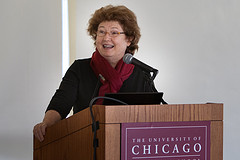Tatiana Sá
Agronomist; Executive Director, Embrapa - Brasília, DF
Amazonian Sustainable Agriculture: A Tangible Contribution to a Development Model for the Amazon
The rural landscape in the Amazon is largely characterized by the coexistence of primary and secondary forest areas, in different stages of succession. It is also marked by areas occupied for agriculture, husbandry and silvicultural activities, as well as their combinations. With special attention to the particularities of the Amazon, agricultural research in the region aims at conciliating the production of tangible goods—food, raw materials, and energy—with the production of intangible goods—environmental and natural resources management. This conciliation takes into account the diversity of its uses and its users, as well as the actors who participated in its evolution. As a result, it operates especially in 4 axes: i) ordering, monitoring and managing territories, ii) management and valuation of natural resources (forest and water), iii) technological options for areas of alternative use, and iv) aggregation of value for production chains.
The available data signal positive results, indicating the solidification of what we may call Amazonian sustainable agriculture. Such an agricultural model does not possess a unique contour, since it corresponds to multiple possibilities of integration among components of agricultural activities and the conservation of the natural resources they use. In order to solidify the broad adoption of technologies that make the Amazonian sustainable agriculture possible, it is necessary to implement a series of measures, many of which must transcend the sphere of agriculture and become part of new a set of developmental models for the Amazon. Such models must be strongly based on science and technology that are oriented towards the reality of the region.
Tatiana Sá is an agronomist and researcher at Embrapa (Empresa Brasileira de Pesquisa Agropecuária) for over thirty years. Currently, she is the executive director of the organization.




